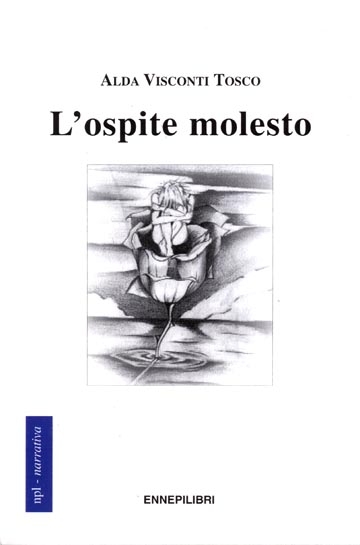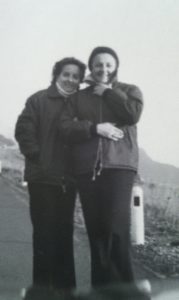
Ringrazio innanzi tutto la Dott. Martina Mariani per aver utilizzato il mio libro per la realizzazione della sua tesi e il suo Relatore il Prof Roberto Medeghini.
Questo lavoro è stato impostato sullo studio della disabilità/fisicità. Il corpo che in automatico essendo “diverso” crea il “target -handicap” che fino agli anni scorsi ha sempre portato ad una sorta di “ghettizzazione”.
E’ uno studio approfondito sulle tematiche socio-medico-culturali della disabilità e il confronto sul “ieri” ed “oggi”. Complimenti alla Autrice.
“Il corpo nella disabilità”
tesi di laurea di
Martina Mariani
Relatore: Roberto Medeghini
A. A. 2009-10
…
“Negli anni passati, la disabilità venne erroneamente considerata come conseguenza di un deficit mentale o esclusivamente fisico.
L’apparire con deficit sia fisici che mentali, era “visto” come elemento disturbatore dell’ordine pubblico, potevano questi individui essere causa di confusione in un ambiente che doveva per forza apparire razionale e chiaro.
Come conseguenza, “questi elementi diversi” erano considerati improduttivi socialmente non inseribili nel contesto di una civile convivenza.
Così come verso la fine degli anni ’60, lentamente si inizia a coniderarlo l’handicap come un frutto di esclusione sociale. A livello medico, l’autrice ha svolto uno studio molto serio di come questa patologia del diverso, fosse non un problema esclusivamente medico, ma un problema che potesse sconvolgere lo stato sociale. Il “difetto” personale non era preso in considerazione. Era un problema esclusivo del “io”.
Era un “fenomeno” sociale, e si effettuarono parecchi studi legati ad una nuova “branca” la sociologia del corpo. Infatti come riporta l’autrice in alcune sue pagine, e con stralci di alcuni sociologi si è preso in esame il rapporto di corpo e apparire nella società odierna.
Con estrema delicatezza, Martina è riuscita utilizzando tre testimonianze di donna con disabilità a mettere in risalto il retaggio atavico del diverso.
L’essere inadeguati o inopportuni, e nello stesso tempo la grande voglia di soverchiare lo schema del diverso, mettendo in luce che alla fine non si è quello che la “vista” vuole vedere, ma quello che la “vista” deve conoscere, condividere e sapere.
L’individualità del proprio “se”, essere “io” e non malattia.
Con maestria si districa nello studio della diversità nel suo contesto sociale, dove prima la scienza medica tendeva ad essere contenitore di disgrazie senza risoluzioni, e in seguito cambiò totalmente integrazione riabilitando il diverso alla più possibile vita normale.”
Martina Mariani, ha 23 anni, sta continuando il suo percorso formativo frequentando un Corso Universitario in Padova.
Il Professore Medeghini, pedagogista insegna presso la Facoltà Universitaria di Bergamo. Autore di numerosi testi legati alla integrazione socio-culturale delle diversità relative soprattutto allo stato di handicap. Studi sull’apprendimento e sul come insegnare a integrare coloro che che pur nella loro “apparente” diversità possono essere e devono essere considerati normali nella era attuale.
—————————————-

I thank first of all, Dr. Martina Mariani for using my book for the realization of its argument and its Rapporteur Prof. Roberto Medeghini
This work was set in the study of disability / physical. The body automatically being “different” create “target-handicap” that until the past few years has always led to a kind of “ghettoization”.
It ‘a detailed study of the socio-medical and cultural issues of disability and the comparison on “yesterday” and “today”. Congratulations to the author.
“The body in disability”
thesis of
Martina Mariani
Rapporteur: Roberto Medeghini
A. A. 2009-10
…
“In years past, disability was mistakenly considered as a result of a purely physical or mental impairment.
Appearing with both physical and mental deficits, was “seen” as a disturber of public order, these individuals could cause confusion in an environment that was bound to seem rational and clear.
As a result, “these different elements” were considered socially unproductive not in the context of a civil society.
Just as in the late ’60s, he slowly begins to coniderarlo disability as a result of social exclusion. At the medical level, the author has done a serious study of how this pathology of the different was not only a medical problem but a problem that could upset the welfare state. The “defect” staff was not taken into account. It was a problem unique to the “I”.
It was a “phenomenon” social and carried out several studies related to a new “branch” sociology of the body. In fact, as reported by the author in some of its pages, and excerpts of some social scientists has examined the relationship of body and appear in today’s society.
With great delicacy, Martina has succeeded by using three examples of women with disabilities to highlight the ancestral heritage of the different.
Being inadequate or inappropriate, and at the same time the great desire to overwhelm the pattern of diversity, highlighting that the end was not what the “view” wants to see, but what the “view” needs to know, share and knowledge.
The individuality of their own “if”, being “I” and not the disease.
With skill you untangle the study of diversity in its social context, where the first medical science tended to be container misfortunes without resolution, and further rehabilitating the integration changed completely different to normal life as possible. “
Martina Mariani has 23 years, is continuing his studies by attending a university in Padua.
Professor Medeghini, educator teaches at the Faculty University of Bergamo. Author of several books related to the socio-cultural diversity of the state especially for the disabled. Studies on learning and teaching on how to integrate those that despite their “apparent” differences can be and should be considered normal in the present era.
——–
Je remercie tout d’abord, le Dr Martina Mariani pour l’utilisation de mon livre pour la réalisation de sa thèse et son rapporteur M. Roberto Medeghini.
Ce travail a été mis à l’étude de la déficience ou physique. Le corps automatiquement être “différent” de créer une «cible handicap» que, jusqu’à ces dernières années a toujours conduit à une sorte de «ghettoïsation».
C’est une étude détaillée des questions socio-médical et culturel de l’incapacité et la comparaison sur «hier» et «aujourd’hui». Félicitations à l’auteur.
“Le corps de l’invalidité”
thèse de
Martina Mariani
Rapporteur: Roberto Medeghini
A. A. 2009-10
…
“Ces dernières années, le handicap a été considéré à tort comme une suite d’un handicap purement physique ou mentale.
Apparaissant à la fois avec des déficits physiques et mentales, a été «vu» comme un perturbateur de l’ordre public, ces personnes pourraient causer de la confusion dans un environnement qui était tenu de comparaître rationnelle et claire.
En conséquence, «ces différents éléments” ont été considérés comme socialement improductifs pas dans le contexte d’une société civile.
Tout comme dans le fin des années 60, il commence lentement à coniderarlo invalidité à la suite de l’exclusion sociale. Au niveau médical, l’auteur a fait une étude sérieuse de la manière dont cette pathologie des différents n’était pas seulement un problème médical, mais un problème qui pourrait bouleverser l’État-providence. Le «défaut» du personnel n’a pas été pris en compte. Il a été un problème unique au «je».
Il a été un «phénomène» sociaux et réalisé plusieurs études relatives à une nouvelle “branche” sociologie du corps. En fait, tel que rapporté par l’auteur dans certaines de ses pages, et des extraits de certains chercheurs en sciences sociales a examiné la relation entre corps et apparaissent dans la société d’aujourd’hui.
Avec une grande délicatesse, Martina a réussi à l’aide de trois exemples de femmes handicapées pour mettre en évidence l’héritage ancestral de l’autre.
Être insuffisants ou inadaptés, et en même temps le grand désir d’accabler le modèle de la diversité, en soulignant que la fin n’était pas ce que la “vue” veut voir, mais ce que la “vue” a besoin de connaître, de partager et des connaissances.
L’individualité de leurs propres «si», étant «je» et non la maladie.
Avec une habileté vous démêler l’étude de la diversité dans son contexte social, où la première science médicale tend à être malheurs conteneur sans résolution, et en outre la réhabilitation de l’intégration a changé complètement différent à la vie normale que possible. “
Martina Mariani a 23 ans, poursuit ses études en fréquentant une université de Padoue.
Professeur Medeghini, éducateur enseigne à l’Université Faculté de Bergame. Auteur de plusieurs ouvrages relatifs à la diversité socio-culturelle de l’Etat en particulier pour les personnes handicapées. Les études sur l’apprentissage et l’enseignement sur la façon d’intégrer ceux qui, malgré leur «apparent» des différences peut être et doit être considéré comme normal à l’époque actuelle.



